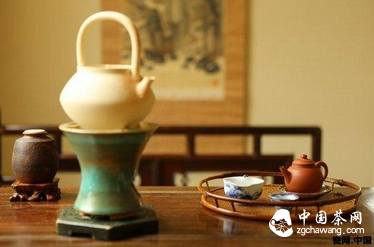
Boiling water: The choice of fuel is important, preferably using charcoal or electricity, avoiding kerosene, diesel, or other fuels with smoke and odors. The degree of boiling varies depending on the tea. For example, brewing high-quality green tea requires letting the boiled water sit for a few minutes until the temperature drops to around 85°C before pouring, and the lid should not be covered to prevent the leaves from turning yellow. For black tea, oolong tea, and especially compressed tea, boiling water should be used. Medium and low-grade teas can be brewed with water at 93°C to 100°C.
Warming the cup: The teacup should be warmed first, as a cold cup affects the extraction of soluble substances from the tea leaves. Additionally, the water temperature at the spout may be too low for proper brewing.
Measuring and adding tea: The correct way to measure tea is to gently pick it up with the thumb, index, and middle finger forming a triangle. Regarding the order of adding tea, Zhang Yuan's Classic of Tea states: "Adding tea follows an order, not missing its proper way. Adding tea first, then water is called 'lower pouring'; adding half the water, then tea, and then filling with water is called 'middle pouring'; adding water first, then tea is called 'upper pouring.' Summer suits upper pouring, winter suits lower pouring, and spring and autumn suit middle pouring." Nowadays, people usually add tea first, then pour water.
Brewing: There is a saying, "pour high, flow low." The technique involves aiming the kettle spout low at the teapot, then raising it to pour from a height, allowing the tea leaves to swirl and float evenly in the water for optimal extraction. When the water reaches 70-80% full, quickly lower the kettle to slow the pouring and avoid foam. The brewing time varies with water temperature and the type and tenderness of the tea. For 85°C water, 4 minutes is ideal, while boiling water requires only 2 minutes. Strip-shaped teas need higher temperatures and longer times to fully unfurl, while flake-shaped teas require slightly lower temperatures and shorter times.
Tao Mu居士: He loves classical Chinese culture and dedicates his life to Zen and tea. He follows Buddhism, enjoys the fragrance of tea and flowers, and lives passionately with faith.